The modern product discovery process is a messy and complex endeavor.
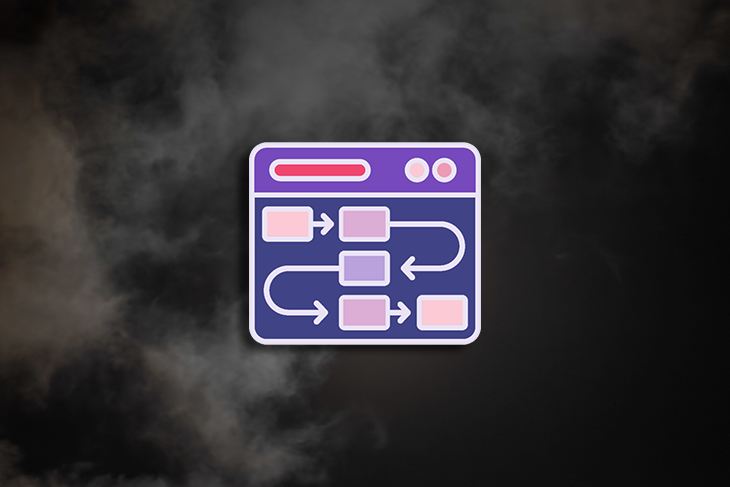
There are various goals you might strive to achieve, numerous opportunities and insights to address, and endless possibilities to tackle these opportunities.
Organizing the discovery process might seem like an impossible task. However, an opportunity solutions tree might help you build much-needed structure in your process.
Let’s explore how.
The biggest challenge of the product discovery process is the underlying messiness. There are three main reasons why product discovery is such a chaotic process:
Most product teams suffer from having too many insights to process rather than too few of them.
Each test, user interview, customer support ticket, and even social media comment is an insight that can help you guide your discovery direction.
It’s often hard to distinguish truly impactful and relevant insights from the noise.
Separating problem and solution space is a problematic task. Users tend to unintentionally smuggle specific solutions they want to see while describing their day-to-day issues.
However, the goal of a UX designer is not to design solutions users ask for but to drive outcomes by solving users’ underlying problems.
With various opportunities you could pursue and numerous ways to address them, it’s difficult to properly prioritize what to focus on next.
An opportunity solution tree can help you address the challenges of the product discovery process by organizing the whole process on a single, well-defined canvas.
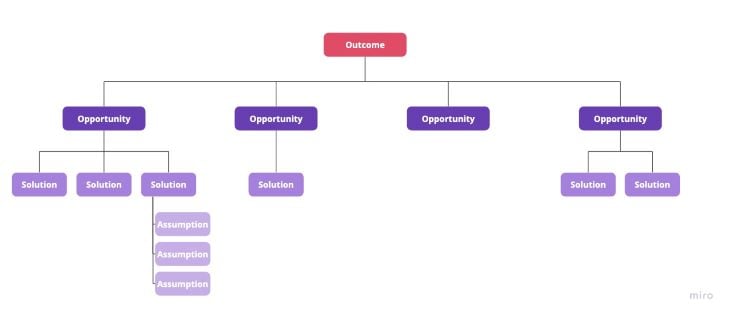
The idea is to define an outcome you want to achieve and then map all potential opportunities (user problems) you can pursue to reach the outcome. You then map solutions that can help you reach these opportunities and map assumptions behind these solutions.
By mapping all opportunities that can help you reach the outcome, identifying solutions to these opportunities, and identifying and mapping underlying assumptions, you get a clear picture of all the knowledge and ideas you have. You can then use this picture to guide better prioritization decisions.
There are a few reasons why this structure of product discovery works well. Opportunity solution trees:
One outcome helps you focus discovery efforts on what’s relevant. Ultimately, anything that doesn’t contribute directly to the outcome you chase doesn’t find its place on the tree.
With abundant insights and potential solutions, staying laser-focused is critical to proper discovery.
It’s easy to accidentally mix up solving user problems with pursuing specific solutions.
A clear separation between opportunities and solutions forces you to clearly differentiate these two. As a result, it makes it easier to draw a clear line between the “problem understanding” and “solution ideas” phases of the design process and facilitates better conversations.
A proper MVP is a test that aims to validate a specific assumption.
Yet, we often forget that and jump straight into building a specific solution. It often increases the resources and time needed to develop an “MVP” and also makes it harder to isolate our learnings and identify what exactly works and what doesn’t.
A laid out list of assumptions shifts the conversation from “how do we test this solution?” to a more manageable “how can we test this assumption?”.
One of the common anti-patterns of product discovery is to overfocus on the first opportunity we spot without actually questioning if that’s the most meaningful problem to solve.
With the opportunity solution tree, you map out all relevant opportunities, regardless of whether you plan to pursue them today or not. This gives you a broader picture of the problem space and encourages you to think if the problem you are pursuing is indeed the most impactful one among all others.
The opportunity solution tree consists of four main parts that are:
Let’s take a deep dive into them.
The most important part of the opportunity solution tree is the outcome you’re trying to reach.
Without a clear outcome defined, it’s easy to pursue random opportunities that don’t drive the most desired results.
A good product outcome answers the question of what change in user behavior you want to see to drive business results.
What change in user behavior do you want to see to drive business results?
For example, “improving revenue” is not a product outcome. It’s a lagging business outcome that can be achieved by reaching different product outcomes, such as:
A good outcome is:
Opportunities are user problems you could solve to drive the product outcome.
The best way to identify potential opportunities is by talking to users and asking the right questions during your interviews. Identify user problems and map on your tree those that can help you achieve the desired outcome.
A few things worth noting:
An opportunity is a problem that can be approached from various angles.
If there’s only one option to solve a given problem, it’s not an opportunity. It’s a solution in disguise. Zoom out and figure out what other, broader problem it solves.
Some opportunities can have children opportunities.
Children opportunities are smaller opportunities that are part of a bigger opportunity. For example, one of the main pain points of Disney+ users might be that they don’t know if the show they want to watch is good. This problem might be a bit too broad, so it’s worth splitting it into smaller, more manageable problems, such as “I don’t know what type of a show it is.”

Opportunities should be specific enough to narrow down your focus.
In the case of an email product, “I’m getting too much spam” is a relevant but too vague problem. Spam means different things to different people. You can derive numerous more focused opportunities, such as:
These are separate opportunities with separate sets of solutions.
Solutions are various possible ways to solve user problems. These usually come from informed ideation sessions done by a product team.
Say you believe that addressing the “I don’t like watching ads” problem has the highest chance of driving the desired outcome. Ideate various ways to improve user experience with ads. It can include:

These solutions are potential candidates for future development efforts for the team.
Every potential solution is based on a set of underlying assumptions. The three most common types of assumptions are:

By identifying these assumptions, you better understand how risky particular solutions are. Most importantly, you can design small experiments to test specific hypotheses before investing in the whole solution upfront.
An opportunity solution tree is just a tool; how valuable it will be depends on how well you’ll use it.
I have four main tips for you to get the most out of your opportunity mapping exercise.
If your tree is narrow and tall, you overfocus on a particular direction.
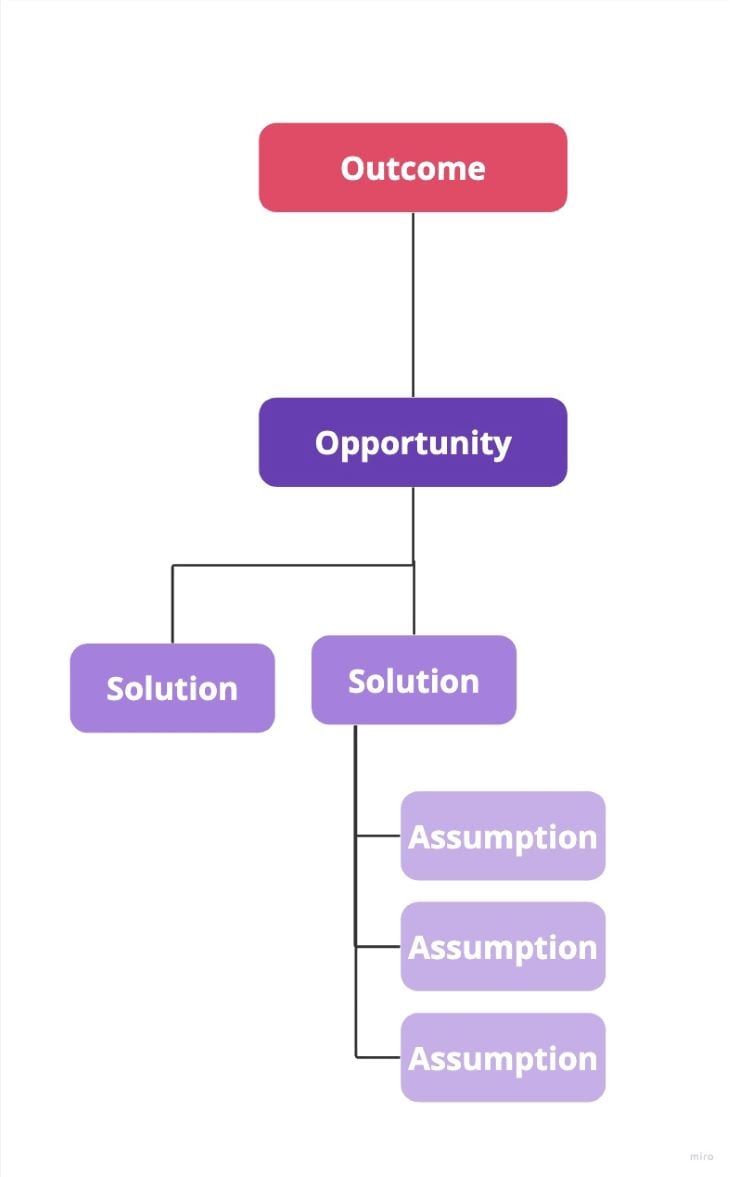
Although it might not necessarily be wrong, that’s not the purpose of opportunity mapping. You want to first identify and map various opportunities and then determine which ones you want to explore further. Otherwise, you might miss more impactful opportunities and solutions along the way.
It might be tempting to build a robust and super-detailed solution tree. It’s a wasteful effort.

Even if you invest dozens of hours in mapping every detail of your problem and solution space, you won’t have to tackle it all. In the meantime, new insights will arrive, and priorities might change.
Instead, choose the one opportunity you want to explore and map potential solutions only for that one. Then, you can work on identifying assumptions for the most promising solutions.

While going deeper into two or three most promising opportunities is okay, don’t try to map every possible assumption for every solution to every opportunity.
Keep it simple and build your tree on the go.
Framing proper opportunities that are mutually exclusive and collectively exhausting requires a lot of effort and thought. Identifying all hidden opportunities might be even more challenging.
But that’s okay.
Timebox your opportunity mapping exercises and try to be satisfied with a scrappy first draft. Then, as you keep gaining new insights, testing solutions, and iterating on your tree, you’ll be able to add details, reframe opportunities and create proper parent-child relationships.
Don’t try to create a perfect tree from the very beginning.
The opportunity solution tree is not an artifact that you can do and reuse for months. Your knowledge, environment, and priorities change too fast.
Instead, use it as an ever-living tool. Review your tree and re-plan regularly based on the newest learnings.
Product discovery is often a chaotic and messy process.
One of the ways to make it more structured is to use an opportunity solution tree. It’s a map of your discovery direction that connects:
That visual map then helps you:
This living artifact, used regularly, will help you structure your product discovery and will be a powerful conversation starter as to what you should do next.
Try it out yourself. Gather a small group of key people and map out your first draft of your opportunity solution tree within about two hours or so. Even if you decide it’s not the right tool for you, the exercise will drive plenty of valuable conversations.
LogRocket's Galileo AI watches sessions and understands user feedback for you, automating the most time-intensive parts of your job and giving you more time to focus on great design.
See how design choices, interactions, and issues affect your users — get a demo of LogRocket today.
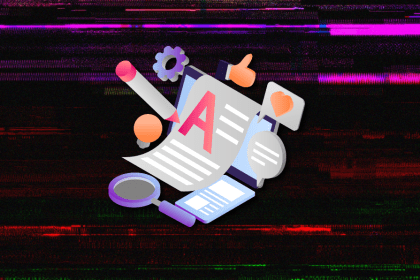
I’ve reviewed “final” designs more times than I can count — and the copy almost always gives users a reason to hesitate.

The checkbox is one of the most common elements in UX design. Learn all about the feature, its states, and the types of selection.

Optimization fatigue is real. Here’s why designing only for metrics drains creativity, and how to bring the human back into UX.
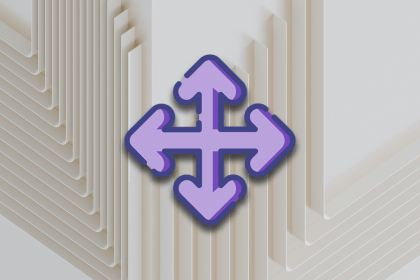
Let’s explore why and when to use drag and drop, discussing real-world examples, platform-specific considerations, and accessibility tips.